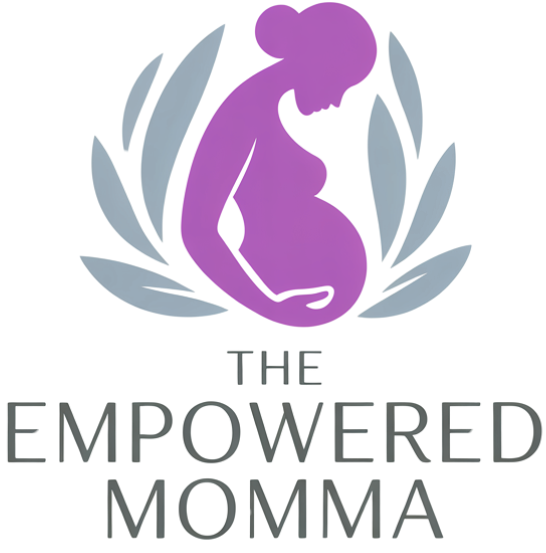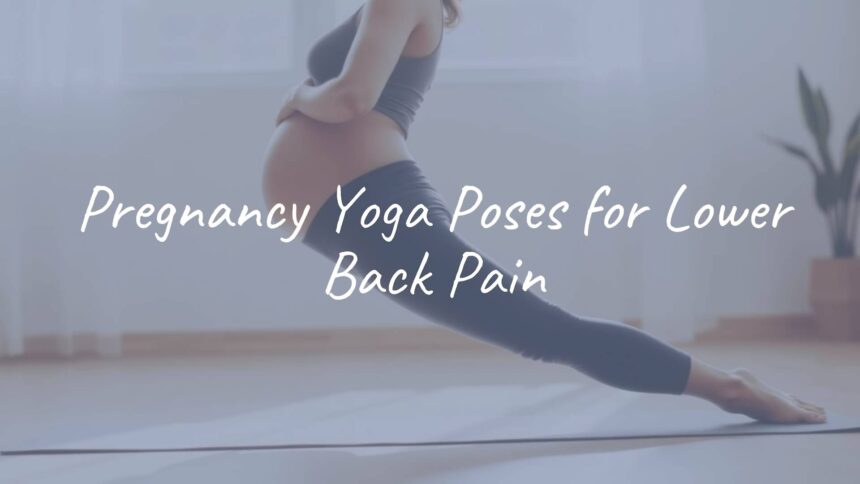Pregnancy is an incredible time, but it often brings its own challenges. For many pregnant women, lower back pain is very common. In fact, about two-thirds of pregnant women deal with this type of discomfort. The pain might be a dull ache in the lower back, or it can feel sharper and sometimes even reach the mid-back, upper back, or neck. Luckily, prenatal yoga can help ease this pain in a gentle and effective way. Yoga not only helps your body but also supports your overall well-being during this important time.
During pregnancy, your body changes a lot. Ligaments soften to get you ready for labor, the spine curves more, and your pelvis tips forward, all of which put more pressure on your lower back. Yoga focuses on stretching, strengthening, and balancing muscles, which helps your body adjust. By targeting specific muscles and helping your body stay in better alignment, prenatal yoga can reduce many aches and pains from your growing belly, making pregnancy more comfortable.

Benefits of Yoga for Pregnant Women with Lower Back Pain
Yoga, which has been practiced for hundreds of years, is especially helpful for pregnant women, particularly when they are struggling with lower back pain. Yoga is not just about stretching – it provides both physical and mental benefits that can ease pregnancy discomforts.
How Yoga Helps with Flexibility and Strength
As your pregnancy continues, your posture may change and your ligaments become looser. Some muscles get tighter, while others get weaker. Yoga helps by both increasing flexibility and strengthening important muscle groups. Carefully chosen yoga poses stretch tight muscles in the lower back and hamstrings, while also making the glutes, core, and upper back stronger. This helps your body stay in better alignment and reduces pressure on your spine and pelvis. Being more flexible and having a greater range of motion can also be helpful as you prepare for labor and delivery.

Yoga’s Effect on Pregnancy Back Pain
The weight gain, increased spinal curve, weaker abdominal muscles, changing center of gravity, and more joint movement all make back pain worse in pregnancy. Yoga works well for these issues. Poses that gently stretch your hips and spine, along with those that make your body stronger, help make you more stable and comfortable. For example, the Cat Stretch helps reduce lower back stress by moving the back in the opposite direction of the common pregnancy back curve. Gentle movements and focused breathing allow you to pay attention to how your body feels and let go of tightness, giving real and natural relief.
Other Benefits of Prenatal Yoga
Prenatal yoga isn’t just about your body. It also gives you a way to handle mental and emotional stress. Pregnancy often comes along with changing emotions and anxiety. Yoga, with its focus on being present, accepting yourself, and caring for yourself, gives you tools to handle those feelings. For example, practicing “360 breathing” helps you breathe into your sides and back, calming your nerves and making you feel better mentally. Studies show prenatal yoga can lower pregnancy symptoms and improve your mood. By connecting with your changing body and finding calm, you can better handle pregnancy and get ready for childbirth.
Precautions and Safety Guidelines for Prenatal Yoga
While prenatal yoga is great for most pregnant women, it’s important to practice safely and be careful with your body. Your body is changing every week, and poses that felt fine before pregnancy, or even earlier in your pregnancy, might not feel right now.
Yoga Poses to Avoid During Pregnancy
| Trimester | Avoid These |
|---|---|
| First | Intense backbends, strong abdominal work, inversions (unless experienced), jumping, hopping, bouncing, and hot yoga. |
| Second & Third | Overstretching (due to looser ligaments), lying flat on your back or right side (to prevent Vena Cava syndrome), arm balances, and deep squats (if at risk of prolapse). |
When to Change or Stop Yoga Practice
Always listen to your body. If you feel pain or something feels wrong, change the pose or stop right away. If you feel dizzy, overheated, very tired, notice any unusual vaginal discharge, bleeding, or numbness, stop immediately and seek help from your doctor or a trained prenatal yoga teacher.
Useful Props and Modifications
- Use cushions, blocks, or folded blankets to help support your body in seated or lying poses.
- Sitting on a cushion or blanket helps ease pressure and makes poses like Bound Angle or Easy Pose more comfortable.
- For knee pain, prop your knees on blocks or cushions.
- In Child’s Pose, keep your knees wide and use a cushion under your head for added support.
- A wall or chair can help with balance in standing poses.

The goal is not to stretch as much as you can, but to find what feels good and helps your body prepare for giving birth.
How to Adjust Yoga Poses for Each Pregnancy Trimester
Your body will change a lot over nine months, and your yoga routine should change with it. If something feels off, modify or skip the pose.
First Trimester
- Typical symptoms: tiredness and nausea.
- Stick with gentle strength-building and tension-releasing poses, especially for the hips and lower back.
- Light forward bends are usually fine, but move slowly.
- Avoid intense backbends, strong abdominal exercises, and inversions (unless you’re very experienced).
- Avoid jumping, hopping, and hot yoga.
Second Trimester
- Increased energy for many women, but more relaxin makes muscles and joints looser.
- Don’t overstretch-even if you feel flexible.
- Avoid lying flat on your back or right side for long periods.
- Use props to prop yourself up or rest on your left side.
- Focus on hip openers and core strength poses.

Third Trimester
- Your belly grows, making movement and breathing more difficult.
- Move even more gently, rest more often.
- Continue to avoid intense backbends, twists from the lower back, deep forward bends, strong ab work, inversions, hopping, and arm balances.
- Pick poses that create more space, relieve discomfort, and prepare your body for labor.
- Supportive poses and breathing exercises are very helpful now.
Top Pregnancy Yoga Poses for Lower Back Pain Relief
Here are some of the best prenatal yoga poses to stretch, strengthen, and create space for relief from back pain. Move slowly, breathe, and if something feels wrong, stop.
| Pose Name | How it Helps | Tips & Modifications |
|---|---|---|
| Cat-Cow Pose | Moves and loosens the spine, eases lower back pain, and helps with pelvic pain | Start on all fours; gently arch and round your back with the breath |
| Child’s Pose / Wide Child’s Pose | Stretches back, hips, and thighs for full relaxation | Widen knees, use a cushion under your forehead for comfort |
| Triangle Pose | Builds strength, relieves back and neck tension, and opens hips | Use a block under your lower hand for support |
| Butterfly (Bound Angle) | Opens hips, stretches inner thighs, and gently works the back | Sit on a cushion, place props under thighs or knees if needed |
| Seated Side Stretch | Stretches side body and helps the lower back muscles that often cause pain | Sit in a comfortable position, stretch arm over head for a side bend |
| Kneeling Lunge | Stretches hip flexors, which often get tight and can pull on the back | Kneel with both knees bent, squeeze back glute, keep torso upright |
| Tabletop & Variations | Strengthens back, hips, and shoulders | Try Cat-Cow movements or gentle leg lifts for more challenge |
| Goddess & Sumo Squat | Opens hips and strengthens legs to support changing body | Use a chair for support if balance is difficult |
| Wide-Legged Forward Bend | Releases tension in back, hips, and legs | Bend knees if needed for comfort, keep feet wide |

Are Forward Bends and Twists Safe During Pregnancy?
- Gentle forward bends are usually fine, especially early in pregnancy, as long as you don’t move too quickly or push too deep.
- Later in pregnancy, deep forward bends get harder. Modify by widening your stance or using props to avoid belly pressure.
- For twists, avoid twisting from your lower back or belly. Instead, make gentle twists from your chest and shoulders. If it feels uncomfortable, skip it.
Tips for a Safe Pregnancy Yoga Routine at Home
Practicing yoga at home can be very helpful as your body changes. Still, it’s important to keep your routine safe and realistic.
Morning or Evening Yoga: Which is Better?
- This is a personal choice. Morning yoga helps you wake up, gets your blood moving, and can prevent stiffness. If your back hurts more in the morning, this is a good option.
- Evening yoga helps you wind down after a busy day, relaxes tense muscles, and can help you sleep better. If your pain gets worse by bedtime, evening practice may work better.
- The most important thing is to practice regularly at a time that fits your schedule and energy level.

How Often Should Pregnant Women Do Yoga?
- A good target is 3 to 5 sessions per week. These can be shorter (15-20 minutes) if that feels better for you.
- Don’t worry about long or difficult practices-quality is more important than quantity. Always listen to your body.
- Some days you might feel more energetic; on others, just do a shorter, gentler session focused on stretching and relaxation.
- Ask your healthcare provider before beginning, and consider working with a certified prenatal yoga teacher, especially if you’re new to yoga or have any complications.
Common Questions About Prenatal Yoga and Back Pain
Can You Do Yoga While Lying on Your Back During Pregnancy?
It’s generally best not to lie flat on your back during pregnancy, especially after the first trimester. This can press on a large blood vessel and make you feel dizzy, nauseous, or short of breath. Some poses on your back are okay for brief periods or if you’re propped up with cushions. For total rest poses like Savasana, lie on your left side with a pillow between your knees or keep your upper body raised.
Is Downward Dog Safe During Pregnancy?
Yes, Downward Dog is usually considered safe and is very helpful for stretching and lengthening your back. Pay less attention to making your legs or heels straight; instead, focus on gently pressing your hands forward and lifting your hips up and back. Bend your knees and lift your heels if you feel tight. This turns the pose into a nice stretch for your whole spine and can help with lower back pain.
How Can I Safely Stretch My Lower Back During Pregnancy?
- Cat-Cow Pose: Gently moves and stretches your back.
- Wide Child’s Pose: Allows your belly room while your back and hips release.
- Kneeling Lunge: Stretches the front of your hips.
- Seated Side Stretch: Helps relieve common side back pain.
- Figure 4 Pose: Stretches the piriformis muscle for those with SI joint pain.
Go slow, breathe deeply, and use props like cushions for support. If anything hurts, stop immediately.
What Kind of Yoga Class is Best During Pregnancy for Back Pain?
- Look for prenatal yoga classes. Instructors are trained to guide you safely, offer modifications, and use props.
- Choose classes that include gentle stretching, core and pelvic stability, hip openers, mindful breathing, and lots of options to use props for comfort.
- Prenatal classes often also connect you with other pregnant women for extra support.
General yoga classes can sometimes be modified for pregnancy, but prenatal classes are safer and usually more focused on the changes your body is going through.

